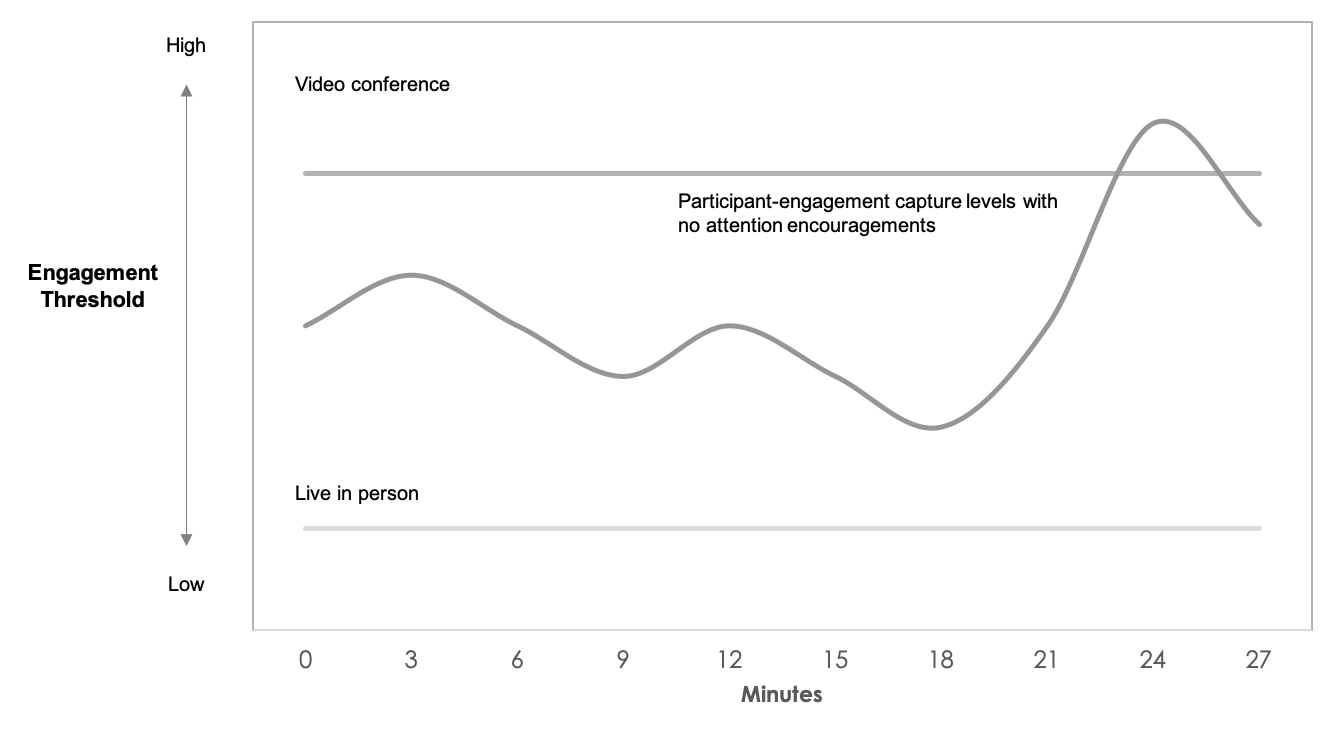Building A Successful Virtual Training
Just before the pandemic began in 2020, I was in a meeting with a sales director at a large company, discussing virtual training. He said, “I’m just not into virtual training.”
I asked why. He responded, “It can be challenging, from a seller’s perspective, to make it relevant in their world. Having them sit in front of a computer screen with content fed at them isn’t a dynamic learning experience. I don’t see our sellers doing that, or getting anything out of it.”
“If you’ve been through something like that, you’re not alone, but this is exactly what I’m not talking about,” I said, “Virtual Instructor-Led Training is very different from typical eLearning or a webinar. Different construct, different purpose, very different experience.”
“How so?” he asked. “Well, do your sellers ever lead video and screen share calls, vs. in-person live sales meetings?” “Of course,” he said. “They do both.”
I said, “Well, if your sellers have a call over video and screen share, is it more like a live, interactive call for the buyer, or more like they’re watching a video or being pitched for an extended time?”
“My best salespeople are dynamic. The better they are, the more interactive they are. Some of them are even more impressive virtually. How they use slides, the web, videos, and virtual whiteboards for selling and make it all very interactive…it’s pretty neat. We’re selling more and more over video.”
I said, “Same for us with training. If you manage the experience well, it can be both as engaging and dynamic as the best in-person training. But people don’t think of it that way at first. They think of ‘that webinar we all had to watch.’ That’s not what we’re talking about here.” The conversation continued.
Many sales and learning executives haven’t bought into virtual training yet. That’s because their experience, or impression, of virtual training is based on bad past experiences. Indeed, virtual training (like all training) has failed aplenty, but only because it’s followed a path that predictably leads to failure while ignoring the path that leads to predictable success.
Building Impactful Virtual Sales Training
When we talk about Virtual Instructor-Led Training (VILT), it’s critical to use instructional and visual design, technologies, and tools that are purpose-built for a virtual environment. As you move to build impactful virtual sales training, consider the following:
1. Develop Short Sessions In A Series
Adult attention spans are short. Rather than talking about training days as people often do with in-person training, you want to think about VILT in terms of training sessions. Sessions are shorter (up to 90 minutes), when everything is broken down into small learning chunks. Programs are delivered in a series of sharp, concise sessions to cover all learning objectives.
2. Design For Attention And Engagement
Training needs to be designed to capture and keep participant attention and engagement. In VILT, the participant engagement threshold is higher. Participants need to be doing something—seeing something new, being challenged to think about what they’re seeing, or contributing frequently—to maintain attention. If they’re not doing anything, you can assume that attention will drift.

3. Practice New Skills And Report Back
One of the benefits of virtual training is the ability to have sellers practice new skills between sessions. When they practice, they come to the next session with their successes and challenges and can rapidly improve and learn from others. With practice, participants take the learning and apply it immediately.
Upskilling your team on prospecting? Have sellers reach out with the offer and sequence taught in the session and report back. Strategic account management? Have account managers complete account plans and review them at the next session. Negotiation? Have sellers apply the six rules of sales negotiation. You get the idea. With the next session just around the corner, accountability is built in. No one wants to show up being the only one who didn’t complete their homework.
4. Leverage Technology And Tools
Polls, chat, breakout rooms, virtual whiteboards, word clouds, video, and more: there are a vast number of technologies and tools to keep participants engaged and to aid in learning.
5. Think Learning System
The goal of any training is to change behavior. Behavior change rarely happens overnight. Just like live, in-person training, think about the training system: what happens before, during, and after the training. How will the learning be reinforced? How will sellers be held accountable for using new skills? What pre-work is required? How are new tools embedded into the seller’s workflow?
Conclusion
As we all transition to virtual training, don’t forget about the components of the best sales training programs that apply to all training, virtual included. Impactful virtual sales training can, indeed, be successful. But you must do more than offer a stand-alone webinar or a series of prerecorded online lessons to have the most significant impact. Manage the experience well, and you’ll be on your way to changing seller behavior because virtual training, can, indeed, “work here.”
Image Credits:
- The graph within the body of the article has been created/supplied by the author.
